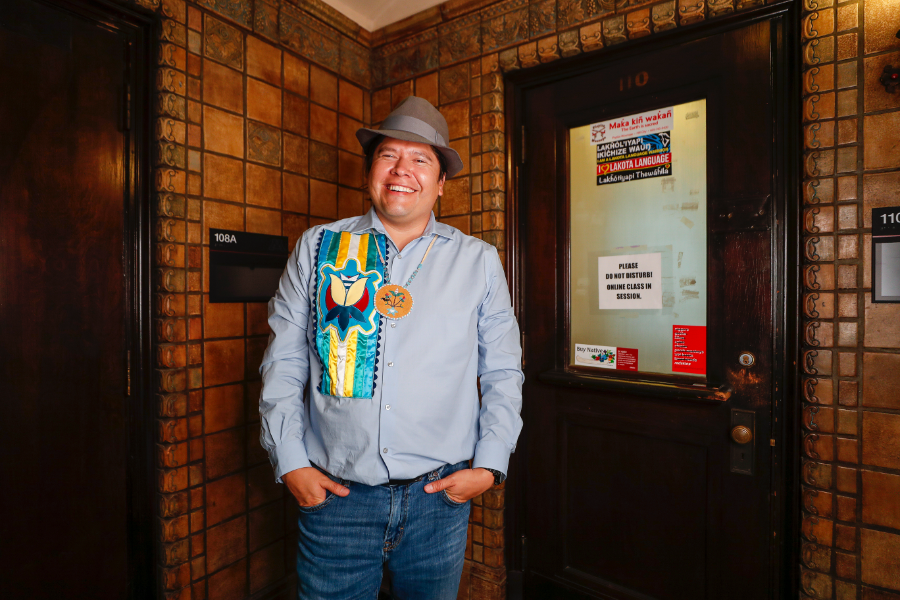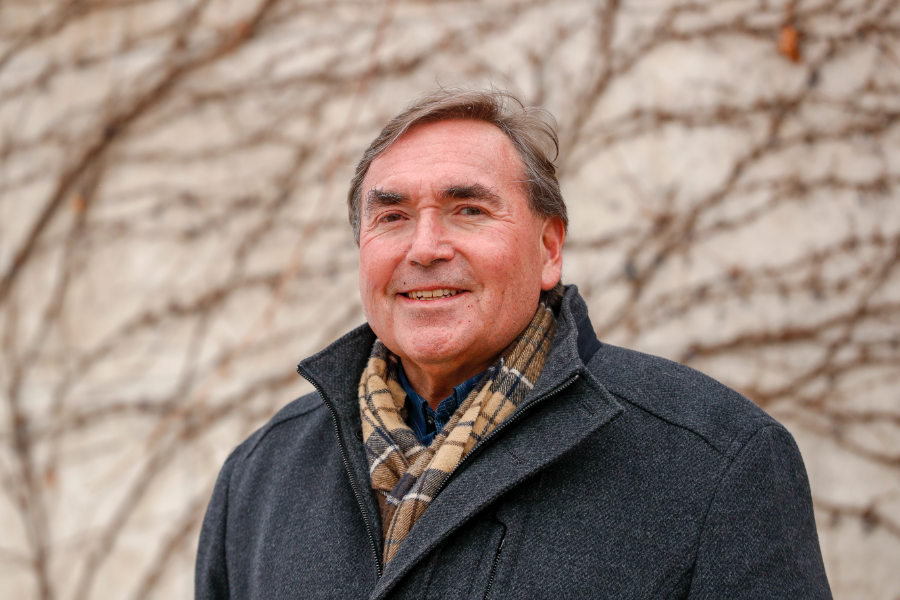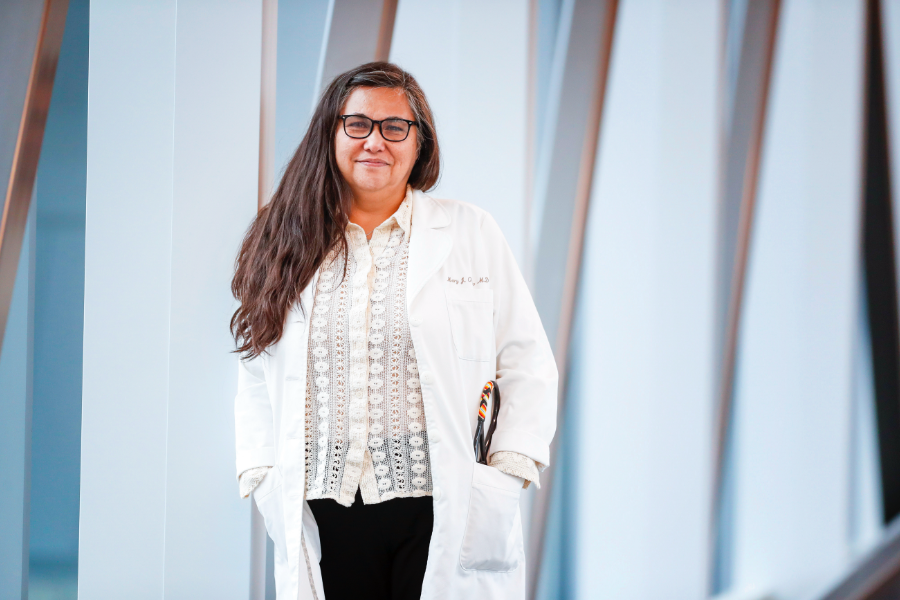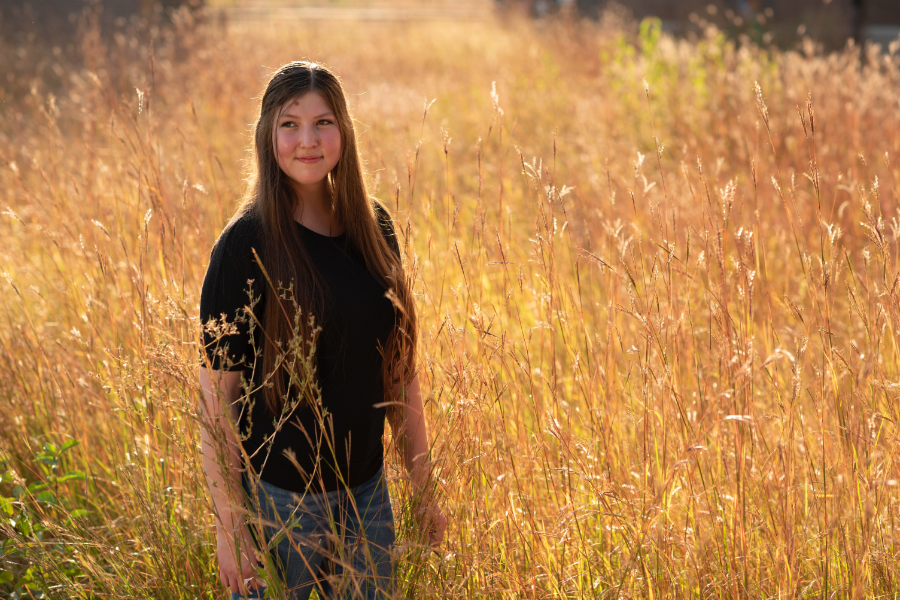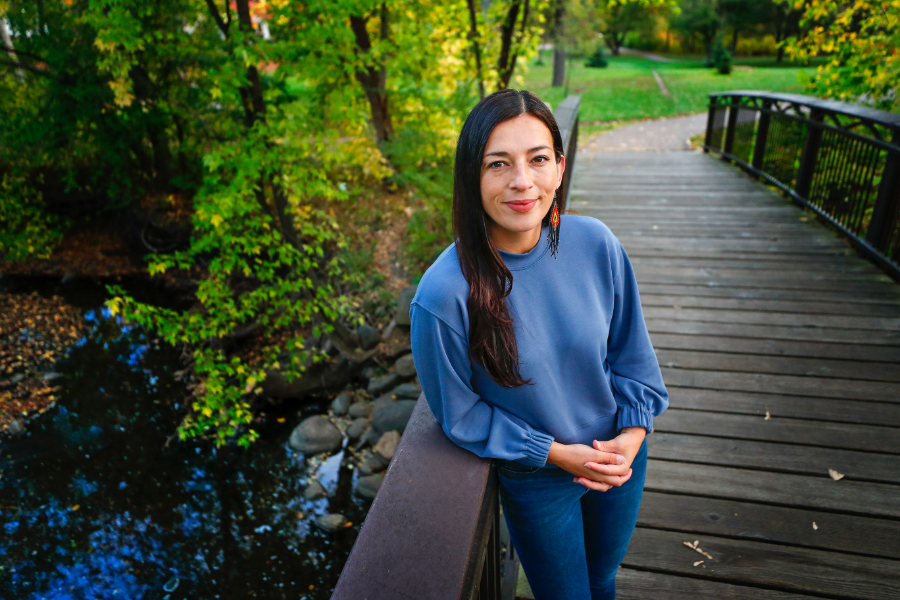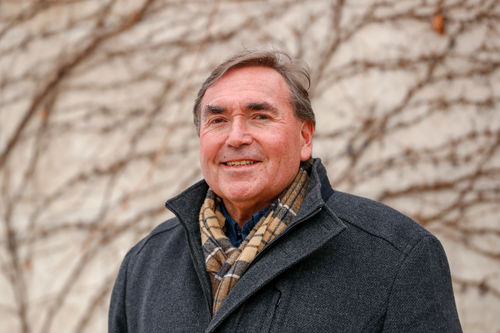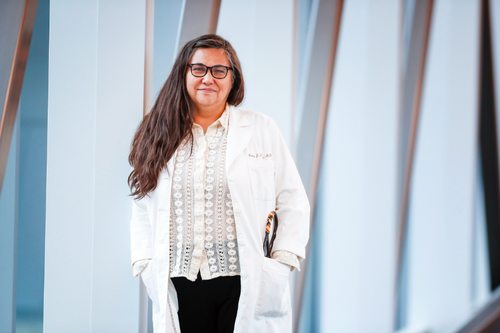Kate Beane: Returning home, restoring a name
The epitome of a lifelong learner, Kate Beane has worked tirelessly to understand the links between the historic and contemporary experiences of her Native community.
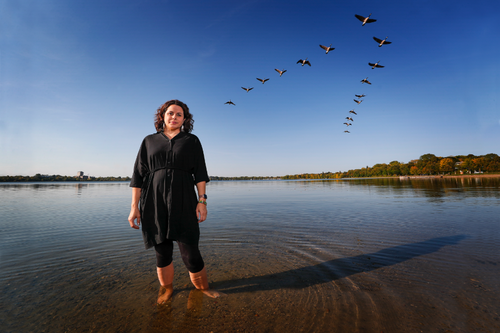
Kate Beane is explaining the arc of her early life story, from her birth at the Indian Health Service in Phoenix to a youth spent in Nebraska and later the East Bay area in California. She then describes living out of her car for a few years, traveling the country, and working a bunch of odd jobs including waitressing—serving others—when she had a revelation:
“I realized at a certain point that I didn’t want to serve other people; I wanted to serve my people.”
And that’s what she’s spent most of her adult life doing. Beane, Flandreau Santee Sioux, has a PhD in American Studies from the University of Minnesota, is director of Native American Initiatives at the Minnesota Historical Society (where she’s also part of the leadership team), and an instructor in the American Indian Studies department at the U.
She’s already been the epitome of a lifelong learner, but ironically she left school at age 16 (after taking the California High School Equivalency Exam), in part because her education didn’t feel relevant.
“As young Native students we were always taught about ‘manifest destiny,’ as if our demise was inevitable. We were taught that we came from a conquered nation of people,” she says. “We knew that wasn’t accurate. It was still hurtful, and it had an impact on us as young Native students.”
“Given that we’re also the grandchildren of boarding school survivors, we already had a large amount of distrust for the United States educational system.”
Through her own educational thirst, Beane became aware of her family’s rich legacy. Her great-great grandfather, Charles Eastman, was the second Native American medical doctor in the United States. And she’s also a descendant of Cloud Man, a Dakota leader who formed an agricultural village in the early 19th century at the lake known then as Bde Maka Ska, later to be named Lake Calhoun.
Her family decided to move to Minnesota to connect with their Dakota roots, and Beane dove into furthering her education. She decided to pursue a doctorate in American Studies at the U of M, in part because it offered a great path for researching and telling her own story.
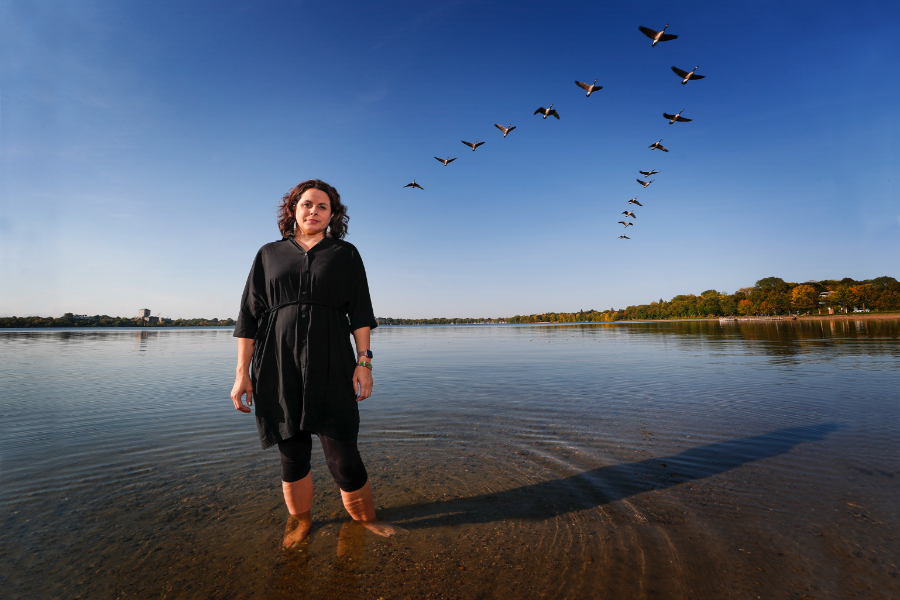
A community-driven name change
For a good portion of the last decade, Beane and her twin sister Carly Bad Heart Bull were at the forefront of the movement to remove the name Calhoun from the iconic Minneapolis lake at the edge of Uptown. The name change wasn’t her idea, but rather the number one recommendation from community members out of meetings to discuss improvements to Minneapolis parks.
“We advocated for a name restoration, because why change a name when there already is one?” she says. There have been other Native names for the lake, but “Bde Maka Ska is a name that has been continually used by our people for the longest amount of time.”
The process was protracted and arduous, winding through community committees, the Minneapolis Park Board, the Department of Natural Resources, Hennepin County, and eventually the State of Minnesota. A lawsuit to discredit the process was denied by the Minnesota Supreme Court.
Some in the community were put off by trying to learn the “new” Dakota name, and that’s where Beane’s daughter stepped in.
“My 3-year-old decided it was her job to educate people about Bde Maka Ska (pronounced buh-DAY muh-KAH’-skah) and the name,” she says. At one meeting, “I went up to the podium and asked if they could show my daughter that they could try. So my daughter taught them. She said Bde and they said Bde; she said Maka and they said Maka; she said Ska and they said Ska. And I thanked them for showing my daughter that they could do it.”
It turns out her daughter had also been tutoring her fellow preschoolers on how to say the name, how to count to 10 in Dakota, and who John C. Calhoun was. “And I didn’t know any of this until parent-teacher conferences,” Beane laughs. “She took her job very seriously.”
As has her mom, every step of the way. On an early October visit to the lake, in front of new signs describing her ancestral community—in Dakota—Beane takes a moment to cherish the accomplishment.
“Seeing that signage was really emotional, and seeing our language and the name of the village—something that people can see from a distance—was incredibly important.”
- Categories:
- Law and Policy
- American Indian
- Culture and diversity
- History
